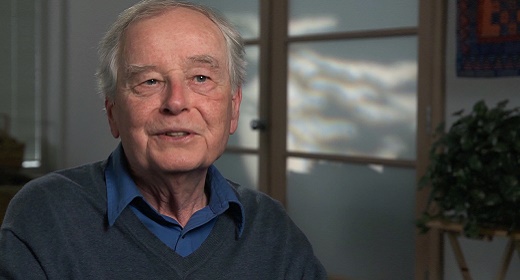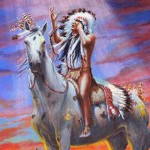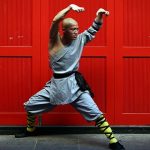Since some of the participants in discussions at this site respect the words of Ramana Maharshi above those of most other sources…

thought the following might be instructive for the present topic of the deep-sleep state.
from “Maha Yoga Or The Upanishadic Lore In The Light Of The Teachings Of Bhagavan Sri Ramana” by “Who”, SRI RAMANASRAMAM, Tiruvannamalai, 2002
The State of Deliverance is egoless. So is deep sleep. So it would seem as if one can become free by merely going to sleep. But it is not so. No one becomes free by going to sleep. When he awakes he finds himself as much in bondage as ever before. We have seen that even the Yogi, when he comes out of his trance, called Samadhi, is in the same predicament. The question is: “Why does not the sleeper, who becomes egoless in sleep, stay egoless? Why does the ego revive again on waking?”
Before we consider the answer, we may notice another feature of sleep, which we find from Revelation. Not only is sleep not the gateway to Deliverance; it is also an obstacle to It. We shall see later on that if the seeker of the Self falls asleep while engaged in the Quest, he has to begin over again on waking. Only if he keeps wide awake all the time, and persists actively in the Quest till the Revelation of the Self takes place, does he become free from bondage. We find this indicated in the third part of the Taittiriya Upanishad, where we are told that Bhrigu, who received his teaching from his father, Varuna, obtained Experience of the real Self – therein named Bliss, Ananda – straightaway from the sheath of the intellect; he did not shed that sheath and become lost in the sheath of bliss – the Anandamaya – which would have meant falling asleep. This last sheath – the causal body – is not separately transcended, but only along with the sheath of intelligence.
When this question was put to the Sage, he referred to the Upanishadic lore, where the question is answered. There is a vital difference between the two states. The Sage enters the Egoless State by the utter and final extinction of the ego, which is the primary ignorance. In the language of relativity he is said to lose contact with the subtle and gross bodies by the dissolution of the causal body – otherwise called the sheath of happiness – which is just this primary ignorance. He passes straightaway from the waking state – by the extinction of the ego – to the Egoless State, which is beyond relativity. Hence it is clear that the Sage becomes free from the causal body. But for this body, there is no sort of connection between the Real Self – which the Sage is – and the other bodies. Therefore he is bodiless and mindless.
The case of the common man going to sleep is quite different. His causal body – the primary ignorance – is not dissolved. Into it the ego and mind are merged and remain there in seed-form until the time of waking. The mind having become quiescent, there is happiness in sleep; but this happiness bears no comparison whatever with that of the Egoless State. The Sage tells us: “The happiness of sleep is like the meagre light of the moon that passes through the thick foliage of a tree and lights up the ground beneath; but the happiness of the Sage is like the unobstructed moonlight that falls on open ground.”
This vital difference between the sleeper and the Sage is illustrated in the ancient lore by the analogy of an ordeal by fire, in which an accused person took hold of a red-hot axe, making protestation of his innocence. If he was burnt he was adjudged guilty and punished. If he was not burnt he was declared innocent and set free. Here the guilty man got burnt, because he covered himself with a lie when he grasped the burning iron. The innocent one was not burnt, because he covered himself with the truth, which protected him from being burnt. In the same way the common man goes into union with the Reality in sleep, covering himself with the false knowledge ‘I am the body.’ Thereby he is a liar, and by that lie he is thrown out and returns to bondage. The Sage becomes one with the Reality, covering himself with Right Knowledge – that is, giving up the ego-sense – and is not thrown out.
The Egoless State is therefore something unique. It does not belong to the world-order at all, to which the three states belong. We have seen already that there is a profounder sleep, the sleep of ignorance, by which the real Self is veiled, so that it is possible to take the ego at its face value, as the real Self. The Egoless State is the State of unclouded Reality, where It shines as the pure ‘I AM.’ This is called the Fourth State, to distinguish It from the three. But this is just a tentative description. The Mandukya Upanishad is careful to say: “They regard It as a Fourth State.” The Sage tells us: “The peaceful and timeless state of the Sage, called Waking-Sleep, which to those that live in (the vicious circle of the three states namely) waking, dream and sleep, is said to be the Fourth State, is alone real; the other three are merely false appearances; therefore the Wise Ones call that State – which is Pure Consciousness – the Transcendental State.”
Thus it is clear that there are not four states, but only one, which is the Natural State of the Self as the sole Reality.
The description of the Natural State as Waking Sleep is very instructive. It tells us that It is the true Waking, but that It resembles sleep. This is clearly brought out in the Gita, which says: “The Sage is awake to That, which is (as good as) Night to all creatures; all that to which the creatures are awake is night to the wide-awake Sage.” The meaning is that the Sage who abides in the Egoless State is awake to That which alone is true, namely the Self; the world is Night to him, because being unreal it is not seen by him at all. Thus Day and Night are distributed between the Sage and the ignorant. What is Day to the Sage is Night to the ignorant, and what is Night to him is Day to them. We have seen already that this Day of the Sage is beginningless, as well as endless, because time is unreal.









































